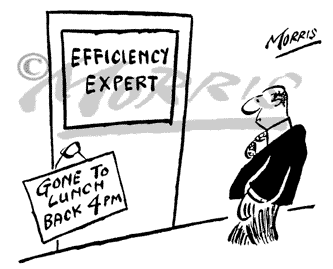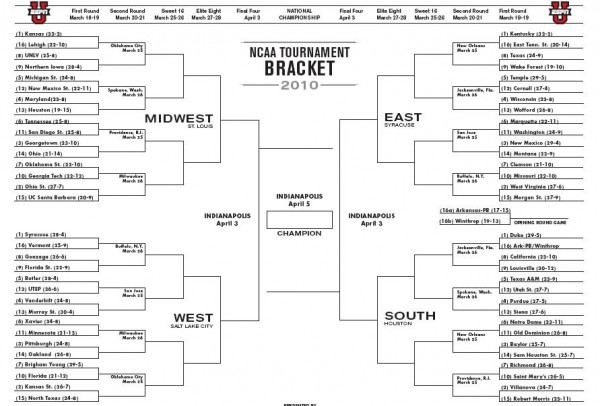Profiling Elite Eight and Beyond With Pomeroy
Posted by rtmsf on March 17th, 2010This is an idea we’ve had bouncing around in the dome for a while now, and since we’re not smart enough to actually do a bunch of number-crunching analysis with regression formulas and all that other statistical nonsense, we’re going to do what we know how to do — eyeball it. (note: if you want a more data-driven analysis, visit Vegas Watch for a region-by-region breakdown) We’ve taken a look at the Pomeroy numbers for the last five seasons (2005-09) to get a sense as to the type of offensive and defensive efficiency numbers that constitute your typical Elite Eight/Final Four/Runner-Up/Championship team. We know that all of these teams are pretty darn good — but can we draw any conclusions based on the past five years of historical data that might give us a clue as to how we should be looking at this year’s bracket?
Here’s the list of roughly thirty or so teams with the strongest efficiency differentials in the 2009-10 season (sorted as such): that far right column is the key number for our purposes. The greater the efficiency differential, the more dominant a team tends to be. Remember that both the offensive and defensive efficiency statistics represent the number of points a team scores over 100 possessions of basketball. +120 is really good for offense, while less than 90 is really good on defense. Anytime a team’s differential approaches +30 points or more, we’re reaching rarefied air in college basketball. (note – Pomeroy doesn’t provide historical data prior to past years’ tournaments, but we still think there is some value in looking at his final ratings because the likelihood that a team significantly improves or regresses during the snapshot window of the NCAA Tournament is small). If you don’t follow Pomeroy regularly, you might be a little surprised at the placement of certain teams versus some others. Have a look…

So what, right? Well, let’s see if we can use the historical data that we have from Pomeroy to make assessments of this year’s batch of teams and their prospects.
National Champions
Let’s first take a look at the last five national championship teams. What jumps out at us immediately is that they’re all offensive juggernauts. Every one of them is ranked first or second in offensive efficiency. These teams know how to score the ball. Defensive efficiency is a little more spotty, but they’re all pretty good (<90 and ranking in the top twenty). The average differential is really high at 37.4 points per 100 possessions, and all of them easily reach the +30 threshold in that regard.
















































